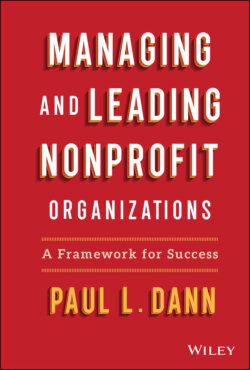Читать книгу Managing and Leading Nonprofit Organizations - Paul L. Dann - Страница 14
Seventh Practice Perspective: Address Inner Pressures
ОглавлениеAs you work to develop your self‐awareness it is important to consider how your growing awareness connects to your inner self. From a psychoanalytic perspective we have thoughts and feelings as well as ideas about who we are in the world and how we should be, which all play a role in our leadership practice. If, for example, you believe that you must have things done right and done well 100 percent of the time, then your leadership will manifest itself in a manner that pursues perfection. Similarly, if you feel that you will never get it right, your capacity to develop a balanced sense of confidence will be hampered and your leadership practice will be adversely impacted.
Understanding your inner pressures and how to manage them successfully will help you to advance in your leadership ability. For example, my upbringing was within a White Anglo‐Saxon Protestant family. Emotions were shared, but we largely adhered to the tradition in which one kept a “stiff upper lip.” Angry and upset feelings were frowned upon. This seems innocuous enough, but let me tell you that as a leader I have had to learn how the internal pressure I experienced to avoid situations where people became emotional impacted my leadership practice. As my self‐awareness grew, I began to realize that I would avoid confrontation or difficult situations simply because I found it intolerable to have people upset.
Ways to address your inner pressures start with first becoming aware that they exist. What types of inner pressure do you experience? Once you have taken stock and feel you know what they are, you can begin a process of addressing them. Sometimes this is as simple as being aware that you experience them and other times it may require that you develop a specific strategy to address the issue. In my case I had to practice managing the feelings that come with the expression of emotion by simply sitting rather than jumping into action to fix the situation. Trust me, as a strategy this was extremely hard, but in time I learned that holding fast rather than reacting would allow those involved to express themselves, they would feel heard, and the highly charged emotions would ultimately pass so that we might move the effort forward.
Another strategy that you can and should pursue is the use of supervision to help you work through the challenges that are presented vis‐à‐vis the inner pressures. Effective supervision can be critical in the development of any and all leadership strategies and is particularly helpful when you are working to address inner pressures. The key is to have a strong supervisor, something that is not always a readily apparent option. When this is not an option, I recommend finding a trusted individual to serve as a mentor for your leadership practice journey (see the section on finding a mentor later in this chapter).
